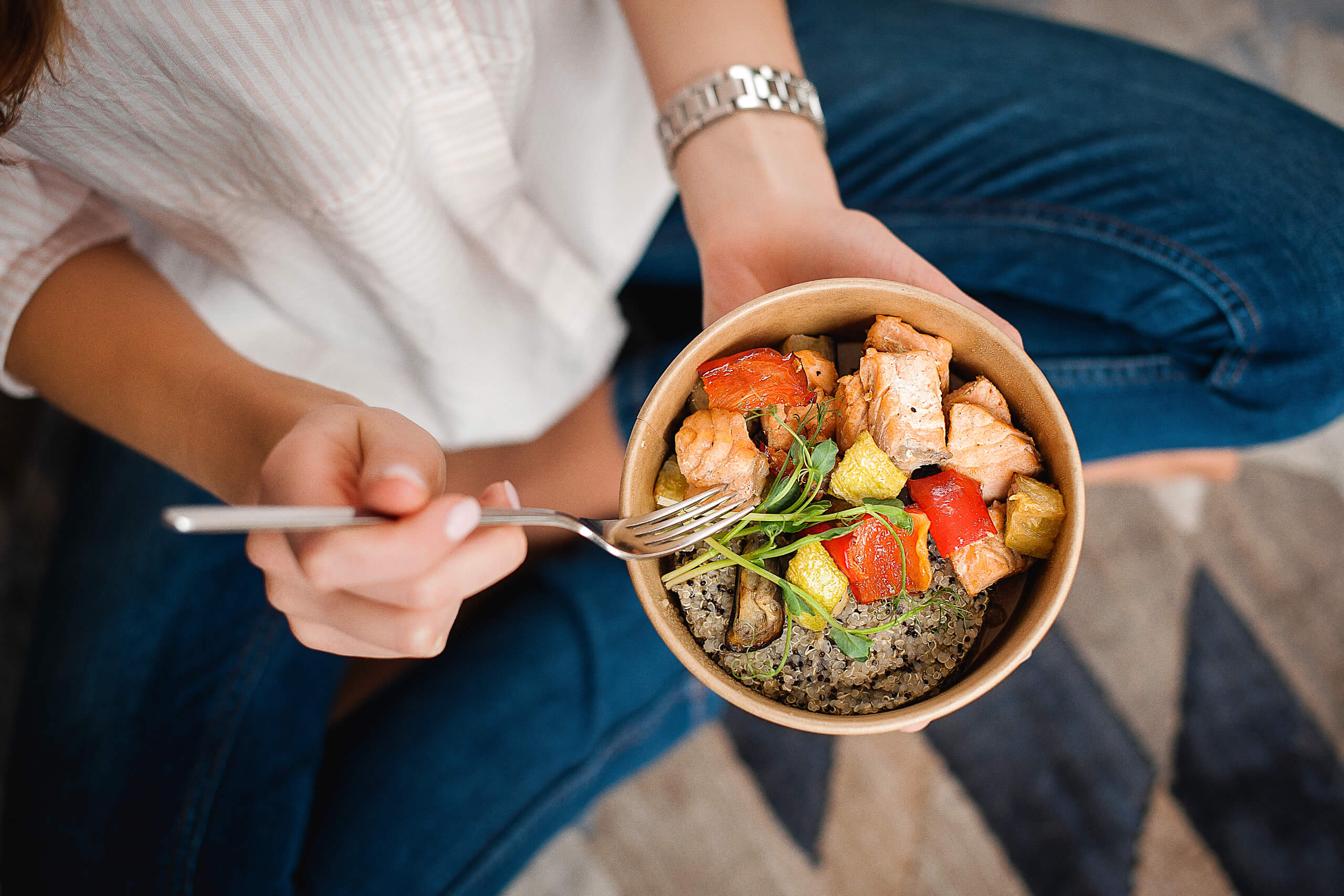Introduction
When it comes to fat burning, women often face a unique set of challenges. The goal isn’t just to lose weight—it’s to shed fat while preserving hard-earned muscle. Unfortunately, many fat-burning strategies focus solely on the scale, leading to muscle loss and a slower metabolism. But don’t worry! There are effective strategies that can help you burn fat without sacrificing muscle mass.
Understanding the Basics of Fat Loss
Before diving into the strategies, it’s important to understand how fat loss actually works. Fat loss occurs when your body burns more calories than it consumes, creating a caloric deficit. However, not all weight loss is equal. Losing muscle along with fat is common if the approach is not well-planned. A strong metabolism plays a vital role in burning fat efficiently, and maintaining muscle mass is key to keeping that metabolism revved up.
Why Muscle Preservation is Crucial
Muscle isn’t just for bodybuilders. It’s crucial for everyone, especially women, because it supports a healthy metabolism and helps you maintain a toned appearance. Muscle burns more calories at rest than fat, which means the more muscle you have, the more calories you burn—even while sitting. Losing muscle during a fat-loss phase can make it harder to keep the weight off in the long run and can lead to a less desirable body composition.
Diet Strategies for Fat Burning Without Muscle Loss
Importance of Protein Intake
One of the best ways to preserve muscle while losing fat is by ensuring you get enough protein. Protein is the building block of muscle, and consuming it regularly can help repair and rebuild muscle tissue, especially when you’re in a caloric deficit. Aim for at least 0.8 to 1 gram of protein per pound of body weight per day. This will help you maintain your muscle mass while you’re burning fat.
Caloric Deficit Without Extreme Restriction
While creating a caloric deficit is necessary for fat loss, it’s crucial not to overdo it. Extreme caloric restriction can lead to muscle loss, fatigue, and metabolic slowdown. Instead, aim for a moderate deficit of 200-500 calories per day. This allows your body to burn fat while still getting the nutrients it needs to maintain muscle.
Incorporating Healthy Fats and Carbohydrates
Cutting out entire food groups, like fats or carbs, can be detrimental to your muscle-preserving efforts. Healthy fats, like those from avocados, nuts, and olive oil, are essential for hormone production and overall health. Carbohydrates, especially complex carbs, provide the energy needed to fuel your workouts. A balanced diet that includes all macronutrients is key to successful fat loss without muscle loss.

Effective Workout Strategies
Strength Training as a Priority
If you want to lose fat without losing muscle, strength training should be at the core of your exercise routine. Lifting weights helps to stimulate muscle growth and retention. Compound exercises like squats, deadlifts, and bench presses are particularly effective because they work multiple muscle groups at once. Aim for at least three strength training sessions per week.
Incorporating High-Intensity Interval Training (HIIT)
High-Intensity Interval Training, or HIIT, is an excellent way to burn fat while preserving muscle. HIIT involves short bursts of intense exercise followed by brief rest periods. This type of training increases your heart rate, burns a significant amount of calories in a short time, and has been shown to help preserve muscle mass when combined with strength training.
Cardio in Moderation
While cardio is important for cardiovascular health and can aid in fat loss, too much of it can lead to muscle loss, especially if done in excess. Stick to moderate amounts of steady-state cardio, like walking or light jogging, and focus more on strength training and HIIT. A good rule of thumb is to keep cardio sessions to about 20-30 minutes, 3-4 times per week.
Supplements That Support Fat Burning
The Role of Supplements in Fat Loss
Supplements can play a supportive role in your fat loss journey, particularly when your diet and exercise routines are dialed in. While they aren’t magic pills, certain supplements can enhance fat loss by boosting metabolism, increasing energy levels, and helping to maintain muscle mass.
Introducing Yohimbine HCL
One supplement that has gained popularity for its fat-burning properties is Yohimbine HCL. Yohimbine is derived from the bark of the Yohimbe tree and has been shown to support fat loss by increasing adrenaline levels and promoting the breakdown of fat cells. It is particularly effective when used in conjunction with a proper diet and exercise routine. If you’re interested, you can find a quality Yohimbine HCL supplement here.
Lifestyle Tips to Enhance Fat Loss
The Importance of Sleep
Sleep is often overlooked in fat loss, but it’s just as important as diet and exercise. Lack of sleep can lead to higher cortisol levels, which promotes fat storage and muscle breakdown. Aim for 7-9 hours of quality sleep each night to keep your metabolism and muscle-preserving hormones in check.
Stress Management
Stress is another factor that can sabotage your fat loss efforts. When you’re stressed, your body produces cortisol, a hormone that can lead to fat gain, particularly around the belly. Incorporating stress management techniques like meditation, yoga, or even simple breathing exercises can help keep cortisol levels in check and support your fat-burning goals.
Consistency and Patience
Fat loss is a marathon, not a sprint. Consistency is key to seeing results, so stick with your diet and exercise routine, even when progress seems slow. Remember, muscle preservation takes time, and the benefits of maintaining muscle mass will pay off in the long run. Stay patient, stay focused, and keep pushing towards your goals.
Common Myths About Fat Burning for Women
Myth 1: Women Should Avoid Heavy Weights
One of the biggest myths is that lifting heavy weights will make women bulky. In reality, heavy lifting is crucial for muscle preservation and fat loss. Women have lower testosterone levels than men, so it’s difficult to gain large amounts of muscle mass. Instead, heavy lifting will help you achieve a lean, toned physique.
Myth 2: Eating Fat Makes You Fat
Dietary fat is often misunderstood. While fat is more calorie-dense than protein or carbohydrates, it’s essential for hormone production and overall health. Healthy fats should be a staple in your diet, even when trying to lose fat.
Myth 3: Cardio Is the Best Way to Burn Fat
While cardio does burn calories, relying solely on cardio can lead to muscle loss. A balanced approach that includes strength training, HIIT, and moderate cardio is the best way to burn fat while preserving muscle.
Conclusion
Burning fat without losing muscle is not only possible but also the most effective way to achieve a lean, toned body. By combining a balanced diet, smart exercise routine, and the right supplements, you can reach your fat loss goals without sacrificing your hard-earned muscle. Remember to stay consistent, be patient, and focus on long-term health and fitness.
FAQs
1. What is the best way to start a fat loss journey?
•Start with a balanced diet and incorporate strength training into your routine. Consistency is key.
2. Can I lose fat and build muscle at the same time?
•Yes, it’s possible with the right combination of diet, exercise, and recovery.
3. How much protein should I consume daily?
•Aim for 0.8 to 1 gram of protein per pound of body weight to support muscle preservation during fat loss.
4. Are supplements necessary for fat loss?
•Supplements can support fat loss, but they work best when combined with a proper diet and exercise routine.
5. What is the best type of cardio for fat loss?
•A mix of HIIT and moderate steady-state cardio is effective for fat loss while preserving muscle.
Related Posts
30/12/2024
Yohimbine HCL vs Other Fat Burners: Which is Best?
When it comes to shedding stubborn fat, the market is flooded with fat burners promising quick results. But with so…
19/12/2024
Yohimbine HCL for Cutting Phases: The Ultimate Fat Loss Tool
When it comes to cutting phases, the struggle is real. Shedding those last few pounds of stubborn fat can feel like an…
07/12/2024
How to Maintain Muscle While Burning Fat: Tips and Supplements
Achieving a fit, defined physique isn’t just about dropping weight; it’s about ensuring that weight loss focuses on…
25/11/2024
Top Benefits of Yohimbine HCL for Weight Loss
Yohimbine HCL has rapidly gained attention among fitness enthusiasts and those aiming for effective weight loss. But…
13/11/2024
Top Benefits of Yohimbine HCL for Weight Loss and Performance
Yohimbine HCL is an increasingly popular supplement among fitness enthusiasts and those aiming for weight loss. But…
01/11/2024
How to Control Cravings and Support Weight Loss with Natural Supplements
Let’s face it, weight loss is hard – especially with cravings getting in the way! Natural supplements can be a…
20/10/2024
Intermittent Fasting for Beginners: A Step-by-Step Guide to Fat Loss
Intermittent fasting (IF) has become one of the most effective ways to lose fat while still enjoying your favourite…
08/10/2024
Ozempic (Semaglutide) Great for Weight Loss?
In recent years, Ozempic, a drug known primarily for managing type 2 diabetes, has been gaining attention for its…
26/09/2024
A Beginner’s Guide to Mindful Eating
In today’s fast-paced world, eating often becomes a mindless activity. We eat on the go, in front of screens, or while…










